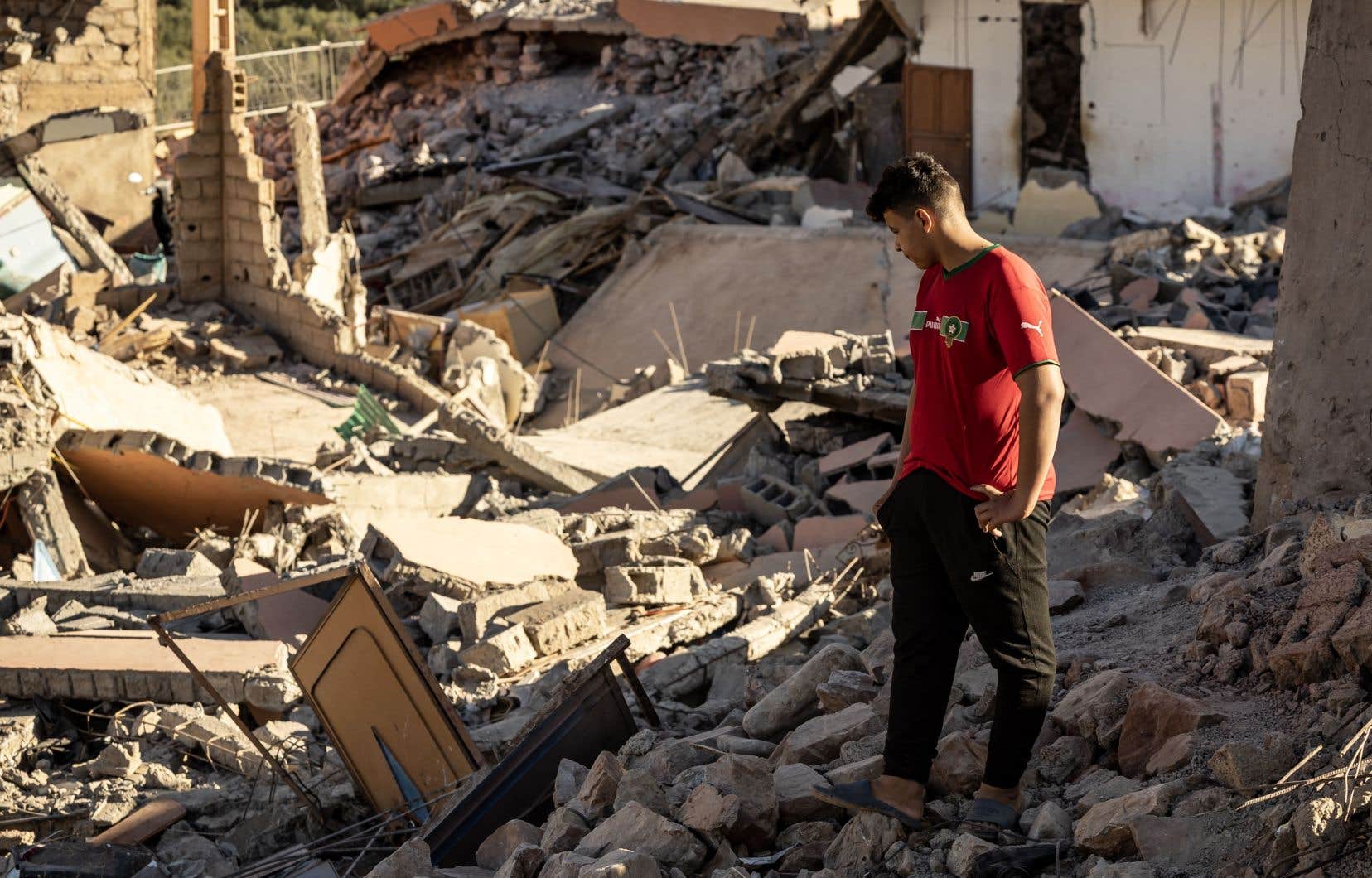Moroccan rescue workers, supported by foreign teams, are stepping up their efforts on Monday to find possible survivors and provide assistance to hundreds of homeless people, more than 48 hours after the earthquake which killed nearly 2,500 people according to a new balance sheet.
The earthquake, the deadliest in the kingdom for more than sixty years, devastated entire villages on Friday evening in a region located south-west of the tourist city of Marrakech, killing 2,497 people and injuring 2,476, according to a latest official report. published on Monday.
On Sunday evening, Morocco announced that it had accepted offers from four countries to send search and rescue teams: Spain, Britain, Qatar and the United Arab Emirates.
According to AFP correspondents, Spanish rescuers were present in two localities hit by the earthquake south of Marrakech, Talat Nyaqoub and Amizmiz.
In Talat Nyaqoub, 12 ambulances, several dozen army and gendarmerie 4x4s were deployed. Around a hundred Moroccan rescuers are briefed by their superiors before starting search operations in the village.
Not far away, a team of 30 Spanish firefighters, a doctor, a nurse and two technicians are coordinating with Moroccan authorities to begin excavations.
A helicopter flies over the village.
” Hope “
“The big difficulty lies in remote and difficult to access areas like here, but the injured are airlifted,” team leader Annika Coll told AFP.
“It’s difficult to say if the chances of finding survivors are diminishing, because for example in Turkey (hit by a very violent earthquake in February) we managed to find a woman alive after six and a half days. There is always hope,” she added. “It is also important to find the dead bodies, because the families must know and grieve.”
70 km further north, another team of 48 men from the Spanish Military Emergency Unit (UME) has established a camp at the entrance to the small town of Amizmiz since Sunday evening.
“We are waiting for a meeting with Moroccan civil protection to determine exactly where we can deploy,” Albert Vasquez, UME communications officer, told AFP.
“It is very difficult to find people alive after three days, but in Turkey we found some after seven days so there is always hope,” he added.
The team is accompanied by four dogs and equipped with microcameras to penetrate small gaps in the rubble, and devices to detect any human presence.
Lahcen and Habiba Barouj wait in the sunlight for news of their 81-year-old father who has just been taken by ambulance to the small local hospital. Their mother, who died in the earthquake, was buried the day before.
“He has a broken leg. Our house was submerged. We saw no help. We had to pull our father out of the rubble ourselves, in a blanket and carried him for miles. We have been sleeping in a field ever since. We are destroyed inside,” said Habiba, his features drawn.
In several localities, members of the security forces continue to help dig graves for the victims, while others set up yellow tents for victims who have lost their homes.
In Marrakech, on Avenue Mohammed VI, dozens of people still spent the night outside, lying on the central reservation or at the foot of their cars parked in parking lots.
In the disaster region, rescuers, volunteers and members of the armed forces are working on their part to find survivors and extract bodies from the rubble, particularly in villages in the province of Al-Haouz, the epicenter of the earthquake.
The earthquake sparked a global outpouring of solidarity and several countries offered help, but “a lack of coordination could be counterproductive,” Rabat said on Sunday.
“Morocco is a sovereign country and it is up to it to organize relief,” reacted the French Minister of Foreign Affairs, Catherine Colonna after the kingdom did not respond at this stage to its offer of assistance .
She announced 5 million euros in aid to NGOs currently “on site” in Morocco.
“The village is dead”
In Tikht, a small village devastated by the quake, a minaret and a handful of unpainted clay houses stand tall amid an apocalyptic landscape.
“Life is over here,” laments Mohssin Aksum, 33, a resident. “The village is dead. »
The earthquake reached magnitude 7 according to the Moroccan Center for Scientific and Technical Research (6.8 according to the American Seismological Service), and is the most powerful to have ever been measured in Morocco.
The earthquake is the deadliest in Morocco since the one that destroyed Agadir, on the west coast of the country, on February 29, 1960: nearly 15,000 people, or a third of the city’s population, died.
